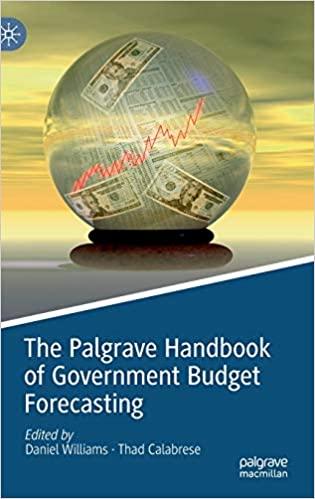Answered step by step
Verified Expert Solution
Question
1 Approved Answer
want to do 1. Financial management involves (a) Managing the finances of a business which includes analyzing and forecasting a firm's finances (b) Assessing risk,




want to do 1. Financial management involves (a) Managing the finances of a business which includes analyzing and forecasting a firm's finances (b) Assessing risk, evaluating investment opportunities, (c) Deciding when and where to find money sources and how much money to raise, (d) Deciding how much money to return to the firm's investors. (e) Only (a) & (c) correct (f) Only (b) &(d) correct (g) All of the above correct 2. Financial management is essentially a combination of accounting and economics for financial managers who use accounting information to analyze, plan and allocate financial resources for business firms provided that financial managers do not use economic principles to guide them in making financial decisions that are in the best interest of the firm. (a) True (b) False 3. Factors that affect the value of a firm are: (a) Expected future cash flows (b) Financial managers do not get involved on increasing cash inflows (c) Sales are the same as cash inflows. (d) For any business firm, the lower the expected cash inflows and the higher the expected cash outflows, the higher the firm's stock price will be. (e) None of the above is correct 4. Why financial intermediaries exist (a) To help to make sure that the initial sellers and markets are available for traders to execute their transactions. (b) To help businesses and state and local governments sell their securities to the public. (c) To process by which an investment banker purchases (d) To do business in international markets (e) Only (a), (b) & (C) correct (f) Only (a), (b) & (d) correct (g) None of the above 5. Real rate of interest: This is the portion of the total nominal rate that represents the return you demand for forgoing the opportunity to spend your money now. (a) True (b) False 6. Primary market: (a) When a security is created and not sold for the first time in the financial marketplace, (b) Once a security has been issued, it may be traded from one investor to another. (c) Where previously issued securities are traded among investors. (d) All of the above 7. Credit Risk is (a) The risk that the issuer of a security may fail to make promised payments to the investor at the times specified. (b) The risk that a financial institution will have than the individual economic units to predict who will pay and who won't. (c) When someone having greater financial resources, to occasionally absorb a loss when someone fails to pay. (d) None of the above 8. Credit Unions are: (a) Not owned government or members financial institutions. (b) They pay interest on shares bought by, and collect interest on loans made to the members. (c) Ensure that credit union members actually are not better credit risks than the general population (d) Credit union members are not entitled to any income the credit union has. 9. The Federal Reserve System serves as the central bank of the United States. It regulates the nation's money supply, makes loans to member banks and other financial institutions, and regulates the financial system. The Fed is made up of twelve district Federal Reserve banks spread throughout the country. (a) True (b) False 10. Consumer finance companies make small loans to consumers for car purchases, recreational vehicles, and the like. Because the customers are a higher risk since they often have less than perfect credit, the interest rates charged on loans are usually higher to compensate for the greater risk. (a) True (b) False
Step by Step Solution
There are 3 Steps involved in it
Step: 1

Get Instant Access to Expert-Tailored Solutions
See step-by-step solutions with expert insights and AI powered tools for academic success
Step: 2

Step: 3

Ace Your Homework with AI
Get the answers you need in no time with our AI-driven, step-by-step assistance
Get Started


